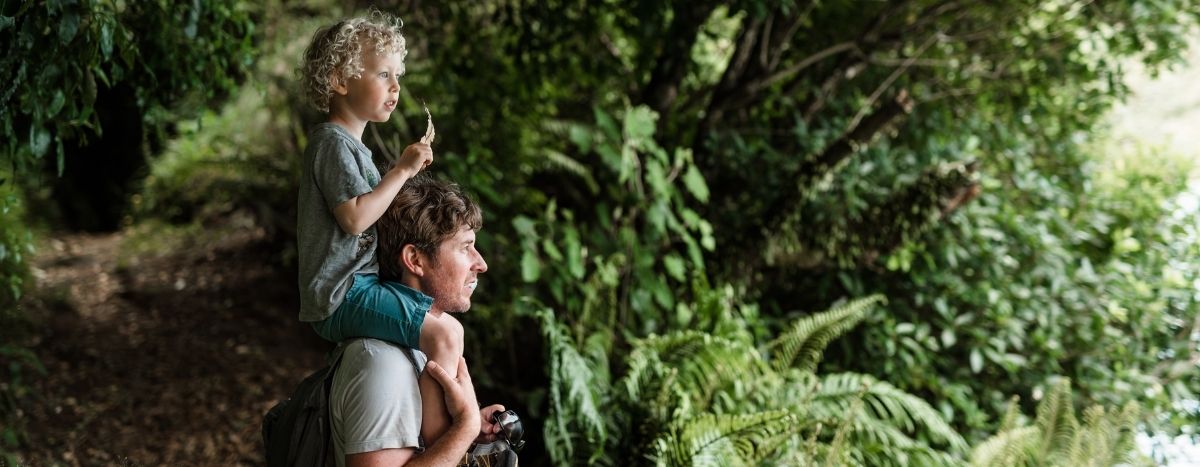Life Insurance
Lump sum payment if you were to pass away or are diagnosed with a terminal illness.
Tim Jarvis - 4 min read
The term ‘nature deficit disorder’ was coined by investigative journalist Richard Louv in his 2005 book, Last Child in the Woods.

Although it’s not recognised as a clinical disorder by the Diagnostic and Statistical Manual of Mental Disorders, I think it captures a profound insight into our reality. Louv also articulated another evocative idea I love: we tend to carry nature around in our briefcases rather than in our hearts.
Our children are often raised in an environment where their interactions and exposure to almost all facets of life are being mediated by a digital screen, even more so during COVID-19 lockdowns. For those who have grown up with omnipresent technology – and those who’ve become accustomed to it – it’s the norm.
We know time outdoors has a whole range of benefits for us. Time in nature lowers our cortisol levels which reduces stress. The theory of ‘indirect attention’ is key to this. Placid, green environments are soothing to us biologically and psychologically.
New Zealand children who grew up on farms have 54 per cent less chance of suffering from asthma or hay fever as adults than their urban-dwelling counterparts. Then, there’s the vitamin D exposure which comes with being outside – which helps with things like bone strength and immune system function.
Time in nature also aids in the development of children’s ‘executive function’ – the cognitive processes we use to control our behaviour. As executive function grows, so does our ability to assess our environment and be confident in our decisions.
If you have kids, you might have noticed they tend to spend more time designing the rules of a made-up game than they do actually playing it. This process is, in part, how children further develop executive function. This is also why activities like organised sports – although great for other reasons – don’t offer the same benefits for this development. When the rules are already set, there’s less space for experimentation and growth. Comparatively, there are virtually endless possibilities for unstructured play while running around outside.
Time in nature also fosters confidence and resilience. If a child is playing in a tree, they have to decide whether a branch is strong enough to support their weight, which helps develop their ability to assess risk. This is an important developmental skill, and one that bolsters their long-term confidence. Nature provides opportunities to problem solve – to navigate the landscape using personal judgement – that human-made environments don’t.
Engage with nature
Taking a walk through a park with your children is a great way to get them outside and enjoying natural spaces. Plus, if you’re an AIA Vitality member, you’ll be logging steps towards your weekly Active Rewards target.
Our lives are linked inextricably with technology, and it’s not going anywhere. We need to work with these tools and use them to steer people outside. In my working life, I often meet people who tell me their love of nature was first piqued by a figure like David Attenborough or Jane Goodall on television – which is much the same thing.
Gamification offers a compelling way to achieve this. It’s something I’ve experimented with for my 25zero project, which allowed people anywhere in the world to virtually ‘climb’ alongside me by tracking elevation on their smartphones.
On a large scale, the release of augmented reality game Pokémon Go in 2016 functioned similarly, encouraging players to explore their surroundings. A systematic review of studies looking at the impact of the game concluded it had a “very positive effect on physical activity, including an increased number of steps walked or jogged, distance travelled and time spent on physical activity.” As well as “improved wellbeing and emotions, increased motivation for being outdoors, being socially and physically active, reduced psychological distress, and improved cognitive performance.”
It’s a matter of using these tools to our advantage, rather than arguing against them until we’re blue in the face.
Tim Jarvis AM is an Australian ambassador for AIA Vitality – the science-backed health and wellbeing programme that helps you make healthier choices (and offers incentives for doing so). AIA Vitality is available with eligible AIA life and health insurance policies. Learn more.
Article by: Tim Jarvis
AIA Vitality Ambassador Tim Jarvis is a world-renowned polar explorer, expedition leader and environmental scientist. With a focus on sustainability, Tim has more than 25 years’ worth of experience in his respective fields, and a wealth of knowledge when it comes to helping teams and individuals perform at their highest level. He also leads The Forktree Project, a registered charity that aims to return a 133–acre former pastoral property in South Australia to a natural state.